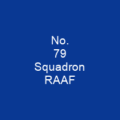The Tuskegee Airmen: Pioneers in the Sky
Imagine a group of African American pilots and personnel who, despite facing discrimination, fought bravely during World War II. These were the Tuskegee Airmen, a remarkable chapter in military history that challenges our understanding of what is possible when barriers are broken.
The Formation and Training
These brave souls trained at various fields across the United States, with their education taking place at Tuskegee Institute (now known as Tuskegee University). The first black flying squadron, the 99th Pursuit Squadron, was deployed overseas to North Africa and later to Sicily and Italy. This group of 332nd Fighter Group and the 477th Bombardment Group became a symbol of hope and determination.
The Red Tails: A Nickname Born in Battle
The Tuskegee Airmen were not just pilots; they were warriors. Their aircraft, adorned with distinctive red markings, earned them the nickname ‘Red Tails.’ This moniker was more than a color—it represented their courage and resilience.
Challenges and Triumphs
Despite facing discrimination both within and outside of the army, these pilots persevered. The effort to train African American aviators was led by prominent civil rights leaders such as Walter White of the NAACP, A. Philip Randolph, and Judge William H. Hastie. In 1941, First Lady Eleanor Roosevelt inspected and flew with a Tuskegee Airman, boosting the program’s public image.
At Tuskegee Army Air Field, a contractor built the facility in just six months with help from laborers from the Alabama Works Progress Administration. This field became the site for training African American pilots under Captain Benjamin O. Davis Jr.’s command. The 99th Pursuit Squadron later became the 99th Fighter Squadron and earned three Distinguished Unit Citations during World War II.
Combat Achievements
The Tuskegee Airmen’s combat record was nothing short of extraordinary. They flew over Sicily, Anzio, Normandy, the Rhineland, the Po Valley, and Rome-Arno. Their most notable achievement came on 24 March 1945 when 43 P-51 Mustangs led by Colonel Benjamin O. Davis escorted B-17 bombers over 1,600 miles into Germany and back.
The 332nd Fighter Group earned a Distinguished Unit Citation for their missions, with 96 Distinguished Flying Crosses awarded to its members. Their operational aircraft included the Curtiss P-40 Warhawk, Bell P-39 Airacobra, Republic P-47 Thunderbolt, and North American P-51 Mustang.
The 477th Bombardment Group
While the 99th Fighter Squadron saw combat, the 477th Bombardment Group operated 60 North American B-25 Mitchell bombers. Despite facing racial segregation and discrimination, this group eventually became a testament to what can be achieved when barriers are broken.
Award-Winning Legacy
The Tuskegee Airmen’s legacy is marked by numerous awards and recognitions. They received three Distinguished Unit Citations for their outstanding performance in combat. Their achievements were not just military; they paved the way for future generations of African American aviators.
Post-War Impact
The Tuskegee Airmen’s success challenged the status quo and led to significant changes within the U.S. military. After World War II, President Harry S. Truman’s Executive Order 9981 ended military segregation in 1948. The Tuskegee Airmen became highly sought after in the newly formed US Air Force, teaching at civilian flight schools and contributing to post-war developments in aviation.
Notable Achievements
Many original Tuskegee Airmen went on to achieve great success. General Daniel ‘Chappie’ James Jr., became the first African American four-star general. Colonel Charles McGee and Lieutenant Colonel Herbert Carter, two of the seven Tuskegee Airmen who flew to Iraq in 2005, also made significant contributions.
Memorials and Tributes
The Tuskegee Airmen’s legacy is celebrated through various memorials and tributes. In 2007, they received a Congressional Gold Medal, with the medal currently displayed at the Smithsonian Institution. Their story has been honored in literature, film, television, radio dramas, and other works of popular culture.
Conclusion
The Tuskegee Airmen were more than just pilots—they were pioneers who broke barriers and changed history. Their legacy continues to inspire us today, reminding us that with determination and courage, anything is possible. The story of the Tuskegee Airmen is a testament to the power of breaking down racial barriers and achieving greatness in the face of adversity.

You want to know more about Tuskegee Airmen?
This page is based on the article Tuskegee Airmen published in Wikipedia (retrieved on January 28, 2025) and was automatically summarized using artificial intelligence.







